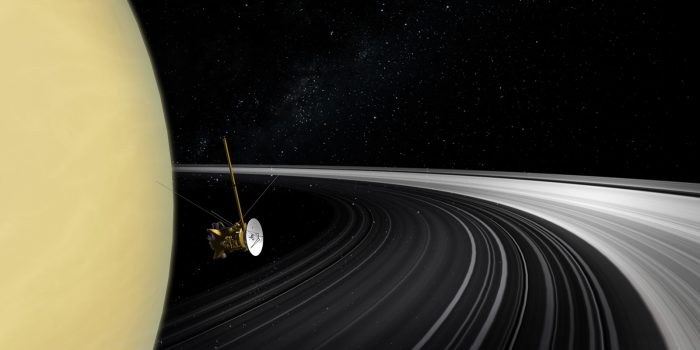Temporary “spoke” patterns across Saturn’s rings have interested scientists since their discovery by NASA’s Voyager mission in the 1980s but have defied explanation. They’ve been spotted in the years leading up to and following the planet’s equinox, growing increasingly visible as the years pass.
NASA’s Hubble Space Telescope recently returned a brand-new photograph of Saturn’s vast gas planet and its magnificent ring structure. The new image is a composite of different exposures captured by the telescope’s Wide Field Camera 3. It shows two smudges in the planet’s “B ring” on the left side of the image.

Saturn has multiple rings, with the “B ring” being the largest and brightest. The smudges captured by Hubble are known as “spokes,” which are enigmatic groupings of dust particles thought to be formed by electrical disturbances—possibly triggered by Saturn’s magnetic field interacting with the Sun’s solar wind. Depending on the viewing angle, spokes can appear light or dark.
There is no known cause for these odd spokes and why they occur seasonally.
“Despite years of excellent observations by the Cassini mission, the precise beginning and duration of the spoke season are still unpredictable, rather like predicting the first storm during hurricane season,” said NASA senior planetary scientist Amy Simon in a statement.
Saturn’s ring system is the most extensive of any planet in the solar system, but it is just one of seven bodies with rings. On Wednesday, February 8th, 2023, scientists announced that they had discovered rings around Quaoar (a small body in the solar system about half the size of Pluto).
The new Saturn image is part of the yearly Outer Planet Atmospheres Legacy (OPAL) program, which seeks to better understand the atmospheric dynamics and evolution of the outer gas giant planets—Jupiter, Saturn, Uranus, and Neptune.

“Thanks to Hubble’s OPAL program, which is building an archive of data on the outer solar system planets, we will have longer dedicated time to study Saturn’s spokes this season than ever before,” said Amy Simon, NASA senior planetary scientist and head of OPAL.


